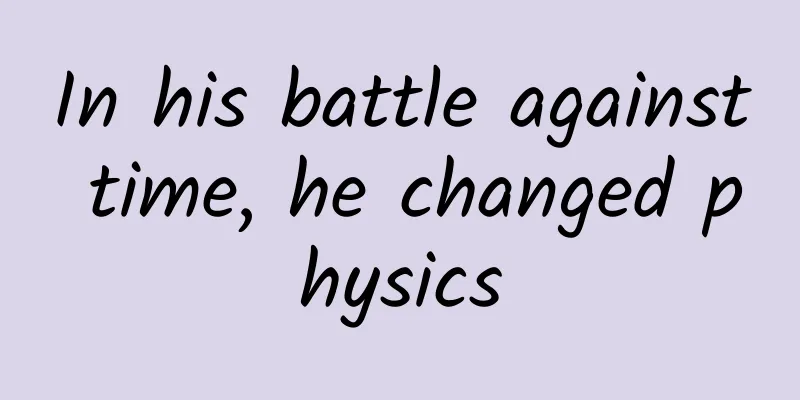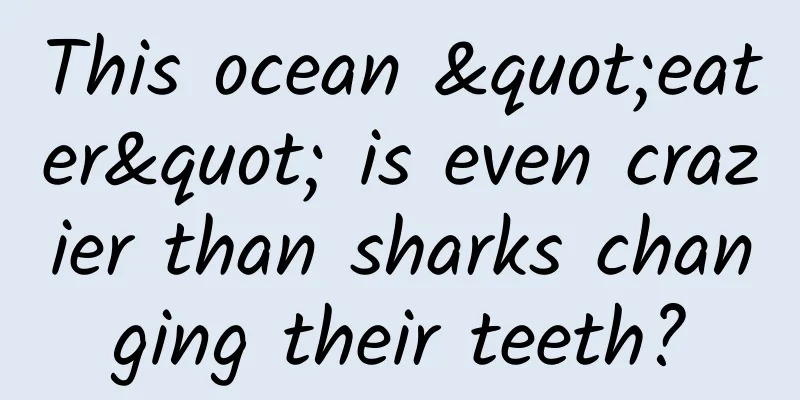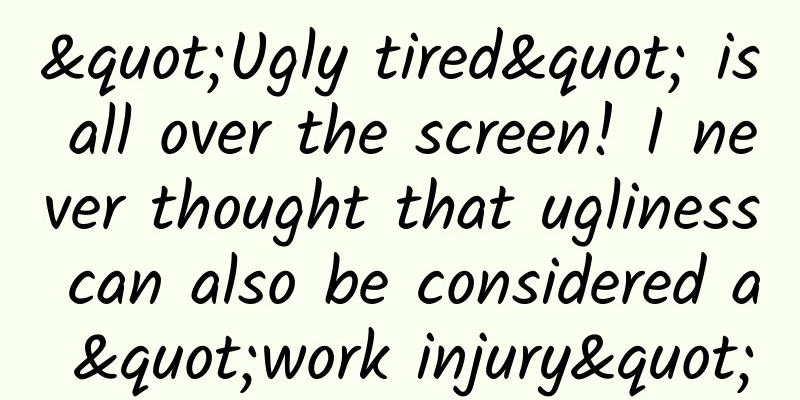In his battle against time, he changed physics

|
By AMANDA GEFTER Translation| 1/137 There were only two words on the postcard: "Hurry up." When 33-year-old physicist Wheeler received a postcard from his brother, Joe, he was working at the nuclear reactor in Hanford, Washington, that was delivering plutonium to Los Alamos. It was late summer of 1944. Joe was fighting on the Italian front in World War II. He knew exactly what his brother was up to. He knew that five years earlier, Wheeler and Danish physicist Bohr had worked out the physics of nuclear fission, the process by which unstable isotopes of an element, such as uranium or, as it would soon be discovered, plutonium, break apart when bombarded with neutrons, releasing unimaginable amounts of atomic energy—enough to level a city and end a war. After the postcard arrived, Wheeler worked as fast as he could, and the Manhattan Project completed the bomb the following summer. In the Jornada del Muerto desert of New Mexico, physicists detonated the first nuclear explosion in human history, turning 1,000 feet of sand into glass. The project's leader, J. Robert Oppenheimer, watched from the safety of his base camp 10 miles away, silently quoting the Hindu scripture, the Bhagavad Gita: "Now I am become Death, the destroyer of worlds." At Hanford, Wheeler was thinking about something else: I hope I'm not too late. He didn't know that on the mountainside near Florence, Joe was lying dead in the bunker. When Wheeler learned the news, he collapsed. In his memoirs, he blamed himself: "One cannot escape the conclusion that if the atomic bomb program had been started a year earlier and ended a year earlier, 15 million lives could have been saved, my brother Joe among them. If I had tried, I might have influenced the decision makers." As a physicist, Wheeler had always been curious to unravel the nature of that mysterious dimension. But now, with Joe's death, it became a private matter. Wheeler’s remaining life was perhaps a struggle against time. His diary, always at hand (now in the archives of the American Philosophical Society Library in Philadelphia, unpublished), reveals a stunning portrait of an obsessive thinker, ever aware of his own imminent death, caught in a race against time not to answer a single question but to answer: “Why does anything exist?” “Of all the obstacles to a complete insight into existence, none is more frustrating than time,” Wheeler wrote. “Explain time? Unless you explain existence. Explain existence? Unless you explain time.” As time went by, Wheeler’s entries about time became more frequent, urgent, and erratic. In one entry, he quoted the Danish scientist and poet Piet Hein[1]: “I really want to know This whole play Before it performed What is it about? Before his curtain fell, Wheeler had transformed our understanding of time more radically than any thinker before or since—a change driven by the memory of his brother, a revolution fueled by regret. Time Myth In 1905, six years before Wheeler was born, Einstein proposed his theory of special relativity. He discovered that time does not pass at a constant rate everywhere for everyone; instead, it is related to the motion of the observer. The faster you move, the slower time passes. If you could move as fast as light, you would see time stop and disappear. But in the years following Einstein's discovery, the formulation of quantum mechanics led physicists to the opposite conclusion about time. Quantum systems are described by mathematics called wave functions, which encode the probability that the system will be in any given state when measured. The wave function is not static; it changes, evolving over time. In other words, time is defined outside the quantum system, as an external clock that ticks away second by second, a direct challenge to Einstein. This was the situation when Wheeler first entered the physics scene in the 1930s—two theories at loggerheads, with the nature of time unresolved. When he began his academic career at Princeton University, Wheeler was soft-spoken, polite, and dressed in a neatly pressed suit and tie. But behind his reserved demeanor lay a fearlessly radical mind. Growing up in a family of librarians, Wheeler was a voracious reader. As he wrestled with the thorny problems of general relativity and quantum mechanics, he consulted not only Einstein and Bohr but also the novels of Henry James[2] and the poetry of the Spanish writer Antonio Machado[3]. When he traveled, he always lugged a thesaurus in his suitcase. Wheeler first realized that time was not what it seemed one evening at Princeton University in the spring of 1940. He was thinking about the positron. The positron is the alter ego of the electron—the antiparticle: same mass, same spin, equal and opposite charge. But why does such an opposite exist? Inspiration struck, and Wheeler called his student Richard Feynman and said, "They are the same particle!" Imagine, Wheeler said, that there was a single electron in the entire universe, meandering through space and time in a path so complex that it gave the illusion of being a single particle but appearing to be a myriad of particles, including the positron, which Wheeler claimed was simply an electron traveling backward in time. (In his 1965 Nobel Prize in Physics acceptance speech, the good-tempered Feynman said he had stolen the idea from Wheeler.) Wheeler was eager to return to Princeton to work on theoretical physics after his work on the Manhattan Project in the 1940s. His return trip was delayed, however. In 1950, still haunted by his failure to act quickly enough to rescue his brother, he worked with physicist Edward Teller at Los Alamos to build a weapon more deadly than the atomic bomb: the hydrogen bomb. On November 1, 1952, Wheeler boarded the SS Curtis, 35 miles from the Pacific island of Elugelab. He witnessed the detonation of the hydrogen bomb, which had 700 times the energy of the atomic bomb that destroyed Hiroshima. When the test was over, Elugelab was doomed. After his work at Los Alamos, Wheeler “fell in love with general relativity and gravity.” Back at Princeton, across the street from Einstein’s home, he gave his first class on the subject at a blackboard. General relativity describes how mass warps spacetime into the strange geometries we call gravity. Wheeler wondered how weird those geometries could get. As he pushed the theory to its limits, he became fascinated by something that seemed to turn time upside down. Called the Einstein-Rosen bridge, it was a tunnel that cut a cosmic shortcut, connecting distant points in spacetime, allowing one to enter at one end and exit at the other, allowing one to travel faster than the speed of light, or through time. Wheeler, a lover of language, knew he could breathe life into obscure mathematics by giving them names; in 1957, he gave this warped section of spacetime a name: a wormhole. Existential confusion: Wheeler wrote, “I knock, therefore I am”[4] | Image source: Corbis Images As he pushed further through space and time, he encountered another gravitational anomaly, where mass was so densely packed that gravity became infinitely strong, causing space and time to be infinitely disrupted. This time, too, he gave it a name: a black hole. Here, "time" lost all meaning, as if it had never existed in the first place. "Every black hole brings with it the end of time," Wheeler wrote. Quantum Universe In the 1960s, as the Vietnam War tore at the fabric of American culture, Wheeler was trying to mend the rift in physics between general relativity and quantum mechanics—the rift that was time. One day in 1965, while in transit in North Carolina, Wheeler asked a colleague, Bryce DeWitt, to stay with him at the airport for a few hours. In the terminal, Wheeler and DeWitt wrote out the equation for the wave function, which Wheeler called the Einstein-Schrödinger equation and others later called the Wheeler-DeWitt equation. (DeWitt eventually called it “that damn equation.”) Wheeler and DeWitt's wave function described not a system of particles moving around in a laboratory, but the entire universe. The only problem was where to put time. They couldn't put it outside the universe, because by definition, the universe is so big that there is nothing outside. So while their equation successfully combined the best of relativity and quantum theory, it also described a universe that couldn't evolve - a frozen universe, trapped in a timeless moment. Wheeler's work on wormholes had already suggested that, like electrons and positrons, we might have the power to bend and break the arrow of time. At the same time, his studies of the physics of black holes had left him with a nagging suspicion that time didn't exist. Now, at Raleigh International Airport, the damning equation left Wheeler with a nagging premonition: Time couldn't be a fundamental part of reality. It must be a stubborn illusion, the result of being trapped in a universe with only an interior, as Einstein had said. Wheeler was convinced that the central clue to the mystery of existence, and of time, was quantum measurement. The profound weirdness of quantum theory, he discovered, was the fact that when an observer makes a measurement, he is not measuring something that already exists in the world. Instead, the result of his measurement somehow brings that fact into being—a bizarre fact that no one in their right mind would buy except for the intoxicating experiment known as the double slit, which had been demonstrated time and again. It haunted Wheeler. In the experiment, lasers send single photons onto a screen with two parallel slits, which then land on a photographic plate on the other side, where they leave a spot of light. Each photon has a 50 percent chance of going through either slit, so after many such experiments, you’ll see two large spots of light on the plate, one indicating a pileup of photons that went through slit A, and one indicating a photon that went through slit B, but you didn’t. Instead, you see a series of alternating black and white fringes—an interference pattern. “Watching this actual experiment in action brings quantum behavior to life,” Wheeler wrote. “Despite its conceptual simplicity, it brings out the mind-boggling oddities of quantum theory in a startling way.” Unlikely as it sounds, this interference pattern can only mean one thing: Each photon passed through both slits at the same time. As the photon hit the screen, it was described by a quantum wave function. When it reached the screen, the wave function split in two. Two versions of the same photon passed through each slit, and when they emerged on the other side, their wave functions recombined—only now parts of them were out of phase. Where the waves were in sync, the light was amplified, creating bright streaks on the photographic plate. Where they were out of sync, the light canceled each other out, leaving dark streaks. But things get weirder when you try to catch photons passing through the slits. Place a detector behind each slit and run the experiment again, with photons following one after the other. Spot after spot, a pattern begins to emerge. It's not stripes. There are two large spots on the plate, one for each slit. Each photon takes only one path at a time. It's as if it knows it's being watched. The photon, of course, knows nothing. But by choosing which properties of the system to measure, we determine the state of the system. If we do not ask the photon which path it takes, it takes both. Our questioning creates the path. Wheeler wondered if the same ideas could be scaled up. Could we ask questions about the origin of existence, about the Big Bang and the 13.8-billion-year history of the universe that created the universe? “The quantum principle is the tip of a vast iceberg, the umbilical cord of the world,” Wheeler scribbled in his diary on June 27, 1974. “The past, present, and future are more closely connected than we realize.” Wheeler drew a capital U for “Universe” in his journal (see image below), with a giant eye at the top left, peering through the abyss of the letter to the end right: the origin of time. As you follow the U-shaped swoop from right to left, time marches forward and the universe grows. Stars form, then die, spewing carbon embers into the cosmic nothingness. Somewhere in the sky, some of that carbon lands on a rocky planet and fuses into some primordial goo that grows and evolves until… an eye! The universe created an observer, and now, through quantum measurement, the observer looks back and creates the universe. Wheeler scribbled a caption beneath the drawing: “The universe is a self-excited system.” Wheeler's U letter: There is a huge eye at the top of the left side, staring through the abyss of the letter and staring at the top of the right side - the origin of time. 丨Picture from the Internet The problem with this picture, Wheeler knew, was that it conflicted with our most basic understanding of time. Electrons zooming back through time and wormholes circumventing the arrow of time were one thing. Discussions about creation and causation were another entirely. The past flowed into the present, and then the present flowed back to affect the past? “These problems must be solved, whatever the cost,” Wheeler wrote in his diary. “Nowhere can I try more to fulfill my duty to humanity, to the living and the dead, to [wife] Janette and my children and grandchildren; to the child who died; to Joe ...” He taped a clipping from The Daily Telegraph to his diary. The headline: “The Days Are Getting Shorter.” Delayed selection In 1979, Wheeler gave a lecture at the University of Maryland in which he proposed a bold new thought experiment that would become the most striking application of his ideas about time: the delayed choice experiment. Wheeler realized that it would be possible to set up the usual double slit experiment so that the observer could decide whether he wanted to see stripes or spots—that is, he could create a bit of reality—after the photon had passed through the double-slit screen. At the last possible moment, he could choose to remove the photographic plate, revealing two small telescopes: one pointed at the left slit, the other at the right. The telescopes could tell which slit the photon had passed through. But if the observer left the plate in place, an interference pattern would form. The observer's delayed choice determined whether the photon took one or two paths, after the photon might have taken one or the other. To Wheeler, this was more than a curiosity: it was a clue to the universe's existence. It was the U-shaped mechanism he needed, a bending of the rules of time that might allow the universe—which was created in a big bang 13.8 billion years ago—to be created by us right now. In the audience, a physicist named Carroll Alley was listening intently. Alley knew Wheeler from Princeton, where he had studied with physicist Robert Henry Dicke, whose research group had come up with the idea of putting a mirror on the moon. Dick and his team were interested in studying general relativity by observing the subtle gravitational interactions between the Earth and the Moon, which required very precise measurements of the distance between the Earth and the Moon as it orbited. They realized that if they could put mirrors on the lunar surface, they could reflect lasers back and calculate the return time of the light. Avery became the principal investigator of the NASA project and installed three mirrors on the Moon: the first was placed by Neil Armstrong in 1969. As Alley listened to Wheeler's talk, it occurred to him that perhaps he could use the same techniques used to measure laser light reflected from the moon to implement Wheeler's idea in the lab. The light signal returning from the mirrors on the moon was so weak that Alley and his team developed sophisticated methods to measure individual photons, which is exactly what Wheeler's delayed-selection setup required. In 1984, Alley, along with Oleg Jakubowicz and William Wickes, who were also in the audience, finally completed the experiment. It was just as Wheeler had imagined: Measuring the present could create the past. Time as we thought it did not exist; the past was not indelibly undone by the future. Wheeler discovered that history—the kind that breeds guilt, the kind that lurks in bunkers—could not remain unchanged. Still, Wheeler hadn’t found the fundamental insight. He knew that quantum measurements could allow present observers to create the past, allowing the universe to bootstrap itself into existence. But how could quantum measurements do that? If time wasn’t primordial, why didn’t it ever stop? Wheeler’s journal became a postcard, written to himself over and over again. Hurry up. The riddle of existence taunted him. “If I don’t keep working on that puzzle, I’m not ‘me,’ ” he wrote. “If I stop, I’m a shrunken old man. If I keep going, I’m alive and well.” In 1988, Wheeler's health began to falter; he had undergone heart surgery two years earlier. Doctors now gave him a deadline. They told him that he could expect to live another three to five years. Under the threat of death, Wheeler grew depressed, fearing that he would not be able to solve the mystery of existence in time to atone for his own failure to rescue his brother. Under the heading "Apology," he wrote in his diary: "It will take years of work to develop these ideas. I - at 76 - have not got them yet." Fortunately, like scientists before them, the doctors got the nature of time wrong. With a twinkle in his eye, Wheeler worked tirelessly to figure out the mysteries of quantum mechanics and the strange loops of time. "Behind the glory of the quantum is — shame," he wrote on June 11, 1999. "Why shame? Because we still don't understand where the quanta come from. Are the quanta a sign of a self-created universe?" Later that year, he wrote: "What is existence? Where do the quanta come from? Is death the punishment for asking such questions..." Although Wheeler’s diaries reveal a man struggling to find his way alone, his influence was widespread. Later, Stephen Hawking and his collaborator Thomas Hertog at the Institute for Theoretical Physics at the University of Leuven in Belgium have been developing an approach known as top-down cosmology, a direct descendant of Wheeler’s delayed choice. Hawking and Hertog argue that just as photons from distant quasars take multiple paths simultaneously when no one is watching, the universe has multiple histories. Just as an observer can determine the photon’s history billions of years ago by making a measurement, the history of the universe becomes real only when an observer makes a measurement. By applying the laws of quantum mechanics to the entire universe, Hawking has lifted the torch that Wheeler had lit that day at the North Carolina airport, challenging every intuition we have about time in the process. The top-down approach “leads to a radically different view of the universe,” Hawking writes, “and of cause and effect.” This is exactly what Wheeler had been after when he added the finishing touch — the universe of his own creation. In 2003, Wheeler was still searching for the meaning of existence. "As far as I can imagine, I cannot possibly talk so reasonably about 'how existence came to be'!" he wrote in his journal. "Time is running out!" On April 13, 2008, in Hightstown, New Jersey, 96-year-old Wheeler finally lost the race against time—that stubborn and persistent illusion. Notes [1] Original text: "I'd like to know/what this whole show/is all about/before it's out." [2] Henry James (1843-1916) was an English-American novelist, literary critic, playwright and essayist. [3] Antonio Machado (1875-1939): a famous Spanish poet. [4] Translation note: The original sentence is “I am not 'I' unless I continue to hammer at that nut”, which literally means “Unless I continue to hammer at that nut, I am not 'I'.” Illustrations by: WESLEY ALLSBROOK The original title of this article is: Haunted by His Brother, He Revolutionized Physics, ( Amanda Gefter is Wheeler's daughter. In 2014, she published Trespassing on Einstein's Lawn: A Father, a Daughter, the Meaning of Nothing, and the Beginning of Everything, a memoir about her father, John Wheeler.
|
<<: Save my life, the sushi in the refrigerator actually glows!!
>>: Why do you start reviewing a fight you didn't win during the day as soon as you take a shower?
Recommend
Apple Pay reveals new issue: Cannot add bank cards after system restore
On January 2, although restoring the factory sett...
Leading the market, but lagging behind in technology! When will the bottleneck problem of new energy vehicles be solved?
my country's new energy vehicles have develop...
What is the specific list of closed communities in Shanghai today 2022? How long will it take to be unblocked? Attached is the latest list of unblocked communities
Recently, in addition to the relatively serious lo...
Genetic lottery! Pear-shaped sisters stand up, these benefits you dare not think about
Review expert: Shen Yingjian, Director of the Nut...
WeChat Moments Advertising- Charging Strategy
Moments ads support two purchasing methods: sched...
What are the functions of the photography applet? How much does it cost to create a professional photography app?
Everyone's exposure to photography is differen...
Following the trend of Internet celebrities’ “fire control skills”, firefighters remind: beware of dust explosions!
Review expert: Zhou Hongzhi, senior experimenter ...
Official account: Niantian Jue Xue Niantian Jue Ji (Part 2) Fault series video
Official account: Nian Tian Jue Xue Nian Tian Jue...
How to build a refined operation system?
As operations enter a refined stage, how should w...
About improving operational conversion rate (Part 2)
When users use a product, there are always two op...
Why do I need to be on an empty stomach for blood draw? Does drinking water count as being on an empty stomach? I finally figured it out today.
For hospitalization, blood draws are usually done...
The basics of through train promotion, a must-read for newbies!
Today I’m going to share with you some basic thro...
Inventory of classic running video types in information flow
In the current information flow industry, short v...
The most nutritious way to cook soy products, have you tried it at home?
Many friends ask: I know soy products are nutriti...
Tiansheng Bridge, the coolest bridge built by nature
In Chinese culture, the connotation of bridges se...









